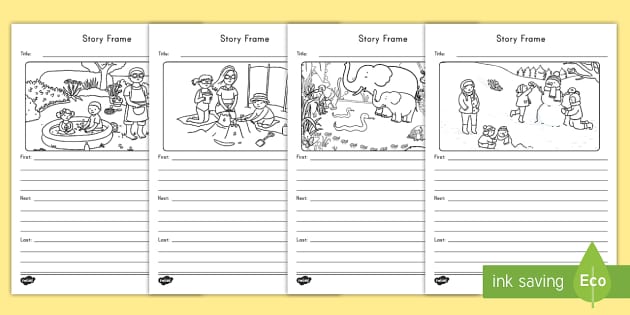
Dr Seuss’s fabulous use of both rhyme and building up longer phrases.Many picture books use repeated phrases, ideas or sounds, often building them up through the book. It helps us to remember ideas and images. This technique is also good for creating continuity, and makes the book more memorable. Many children’s books use repetition of phrases, ideas or sounds (through rhyme) as a way of creating interest (see box). You have to pitch them at the right level-simple enough to understand without a dictionary, but complex enough to be interesting. Choosing Your WordsĬhoice of words is key in children’s books. This may be through the intervention of someone or something, or they may simply solve the problems themselves. The key here is to get the right number of obstacles, of the right level of difficulty-and find a way for your characters to overcome them.
CHILDRENS STORY WRITING SERIES
Your plot then revolves around how your main characters solve the problem, usually overcoming a series of obstacles. Make sure that the main problem or action is introduced early-preferably on the first page. To be fair, this is also true of many adults-but it’s especially true of children.Ī top tip, then is just to launch straight into your story. They don’t want back-stories, or lots of detailed description. Generally speaking, children want and need you to get to the point quickly. For example, books aimed at children aged five to eight years, generally contain characters who are 10 or 11 years old. When choosing the ages of your characters, remember that most children like to read about characters who are older than them. You can also get round any gender issues by using non-human characters, such as animals, aliens or even machines-though even these are often given genders in stories. However, good strong characters, and good stories, transcend these gender norms and preferences. This is, oddly enough, often particularly true of younger children, who are trying to work out gender norms from what they see around them. It is a generalisation, but many boys prefer to read about boys, and many girls about girls. This seems likely to be so that they appeal to a wider audience.īooks that are only about boys are generally aimed at boys, and vice versa. You can then use this information to tweak your idea, and make it unique.Ĭhildren’s books often have two (or more) main characters, and usually at least one boy and one girl.

This will show you what other books are out there on a similar theme. You can then either search Amazon, or simply Google your phrase together with the words ‘children’s book’. To avoid this, he suggests that you should choose your best idea, and summarise it in a single phrase.

It mostly applies to fiction, but some of the ideas will also work for non-fiction.Ĭhildren’s book editor Matthew John Fox suggests that one of the main reasons why children’s book ideas are rejected is because they have already been written.
CHILDRENS STORY WRITING HOW TO
This page provides some tips and ideas about how to write a compelling book for children. “The third way … consists in writing a children’s story because a children’s story is the best art-form for something you have to say: just as a composer might write a Dead March not because there was a public funeral in view but because certain musical ideas that had occurred to him went best into that form.”Ĭ.

Maurice Sendak, author of Where the Wild Things Are I write - and somebody says, ‘That’s for children!’”


 0 kommentar(er)
0 kommentar(er)
